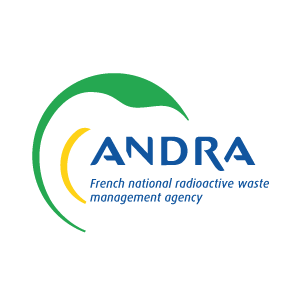NF-PRO: Understanding and Physical and Numerical Modelling of the Key Processes in the Near-Field and their Coupling for Different Host Rocks and Repository Strategies
NF-PRO (Understanding and Physical and Numerical Modelling of the Key Processes in the Near-Field and their Coupling for Different Host Rocks and Repository Strategies) was an EU project to increase the understanding of the processes affecting radionuclide migration in the near-field of underground nuclear waste repositories.
Overview
Project Dates: 01/01/2004 – 31/12/2007
Project Status: Closed
Website: http://www.nf-pro.org (now taken down)
The barrier system of a Geological Disposal Facility (GDF) for nuclear waste is composed of a number of elements to ensure the containment of the committed waste. Aspects of the barrier system include the wasteform, waste container, the vault backfill/buffer material and the rock hosting the facility. Understanding how all of these systems interact and evolve over the long term and the effect of these systems on radionuclide migration is vital to ensure the safety of a GDF.
The NF-PRO project investigated processes affecting the barrier performance of the near-field of geological repositories for high-level waste disposal. Its scope included repository concepts/designs that were under investigation in EU Member States at the time in salt, granite and clay host rocks. Work within NF-PRO established a strong link between laboratory and in-situ experiments, modelling, and assessments of the overall system performance. NF-PRO strengthened the overall scientific-technical basis for geological disposal, reducing many of the uncertainties relating to the containment provided by the near field and providing key inputs for the assessment and the optimisation of repository designs.
Objective
The principal objective of NF-PRO was to contribute to the establishment of a scientific basis for evaluating the safety function “containment and minimisation of release” of the near field of an underground repository. More specifically, the detailed objectives of NF-PRO were:
- To resolve a number of outstanding issues with respect to the key processes controlling the dissolution of the vitrified waste/spent fuel matrix including processes related to the release of radionuclides from the waste matrix to the geological environment;
- to establish a comprehensive insight in the chemical processes and materials interactions taking place in the near field of a geological repository for high-level waste (HLW) and spent-fuel disposal;
- to investigate the evolution of the thermal, the hydrological and the mechanical processes taking place in the near field and their influence on the total system;
- to assess the impact of the evolution in the disturbed zone (from repository construction until T-H-M equilibration) on the physico-chemical conditions of the near field including waste matrix alteration processes, radionuclide mobilisation/immobilisation, and mass transfer;
- to identify and to provide key data on critical processes and their couplings determining the evolution of the near field and affecting radionuclide release to the geosphere; and,
- to translate models and data on complex and coupled near-field processes to concise but accurate models and data as input to assessments of the overall system performance.
Results
Work by NF-PRO led to a better insight to key processes affecting the confinement performance of a geological repository in the near field. The scope of the work comprised the wasteform, the waste container, the engineered barrier system (EBS) and the local host rock. Drawing these factors together enabled the interdependencies between processes affecting different constituents of the overall near-field system to be considered. NF-PRO strengthened the overall scientific-technical basis for geological disposal, reducing many of the uncertainties and providing key inputs for the assessment and the optimisation of repository designs.
The specific technical achievements of the NF-PRO project can be broken down by research area; some of the main results in each technical area are discussed below.
Advances in research related to key processes affecting the wasteform (vitrified high-level waste and spent fuel)
NF-PRO investigated radionuclide release from disposed vitrified waste and spent fuel, taking into account the dominant near-field processes controlling the alteration of the waste matrix and the release of radionuclides from it, and the couplings and evolution of those processes. This work improved glass dissolution models and explored a number of effects related to radionuclide release from UO2 spent fuels. This enabled more accurate source terms to be established for radionuclide release from these sources.
The chemical evolution of the engineered barrier system
The chemical evolution of the engineered barrier system was studied, in particular the evolution of the porewater composition in the near-field system, chemical alteration processes, the formation of secondary phases and corrosion products, and the impact of new-formed phases on sorption and radionuclide mobility. The work focused particularly on the MX-80 and FEBEX bentonites, and led to a better understanding of key processes affecting radionuclide mobility in the EBS system under realistic repository conditions. These data are particularly important to performance assessment since they contribute to the reducing of parameter uncertainties regarding the near-field source term.
Thermo-hydro-mechanical and coupled processes affecting the near-field system
An important part of the work performed by NF-PRO concentrated on the investigation of the combined effects of thermal, geomechanical and hydrological processes on the performance of bentonite buffers and crushed-salt backfills. As part of the experimental programme, aspects including the long-term hydration and migration of gas in bentonite buffers were explored. In addition, for evaporite repository concepts, the effect of adding bentonite to a primarily crushed salt backfill and the properties of precompacted salt bricks for backfilling were investigated. Compaction experiments were also performed to investigate the long-term behaviour of compacted salt at low differential stresses and low porosity.
Research on the initiation and the development of the excavation-damaged zone
NF-PRO also researched the initiation and the development of the Excavation-Damaged Zone (EDZ) in the host rock (this is the local area of the host rock which is affected by the excavation of the GDF). In situ measurements, laboratory tests on rock samples, together with desktop studies and modelling exercises carried out as part of NF-PRO provided new information on the different phases of the damaged zone, from its initiation, through its intermediate evolution phase up to its long-term evolution. Also, new in situ EDZ characterisation techniques such as seismic-acoustic monitoring, ultrasonic logging, seismic and geoelectric tomography and very-high-resolution ultrasonic logging, were improved and developed. For indurated and soft clay rocks it was shown that the EDZ impact is in fact very limited and will likely not affect the overall repository safety.
Process couplings and integration in performance assessment
The NF-PRO project had a strong performance-assessment perspective; this approach helped increase the awareness of process specialists in relation to overall system behaviour and forced performance-assessment specialists to examine how various detailed processes may influence the key features in the system that contribute to safety. During the final year of NF-PRO, the developments in process understanding within the project were evaluated, both at the detailed process level by the appropriate specialists and by the performance-assessment specialists. This enabled progress in the project to be placed in the context of the performance of the different near-field disposal systems and the most important areas of further research for these systems to identified.









